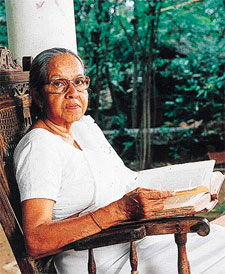Three youngsters stepped into my office, bubbling with zest and a hope in their eyes, inviting me to write for their newly launched e-journal, dedicated entirely to theatre. And adding on their plans to bring some of the issues in print. Had I heard right? A magazine dedicated to theatre? Did this not ring bells of similar sentiments voiced over the years and aborted attempts of this genre of journalism. Not being sceptical but definitely wary, I didn’t intend to dampen their enthusiasm, but surely sat back to contemplate on the plight and the unsuccessful run of many such ‘Exclusive for theatre Magazines and Journals’. I started by asking few questions but ended up with tsunami of unanswered issues and hiccups in this endeavour. In these musings I don’t intent to encompass similar exercise across India, but restrict to the ones carried out in Maharashtra or the ones I have personally being associated with. With a touch of caution, I admit that I have no scholarly research to back my observations- something that is the dire need of the time- but definitely have been witness to many such botched attempts.
At one end this trepidation, but at the other I am tempted to look back and trace the contribution of such writings to the theatre movement. Has it really been contributing or just a fancy of some scholars and publishers, to the theatre movement? An enormous quantum of work has been penned, both through journalistic writings in Newspapers and Magazines and scholarly expression through books. This reference material has been useful in laying the foundation for a comprehensible understanding of a period in theatre that is now the past. These have been in terms of reviews, critical writings, interviews, books etc, by scholars and thinkers in the earlier times like Madhav Manohar, Dyaneshwar Nadkarni, V.Y Gadgil, Pushpa Bhave, Kamlakar Nadkarni, Raja Karle, Madhav Kulkarni, Padmakar Kulkarni, R.G Sardesai, V.B Deshpande and others. There writings were valued by both the theatre fraternity and the casual readers. The torch bearers of the next generation that kept the flame alive were noted writers like Mangesh Tendulkar, Madhav Vaze, Sureshchandra Padhye, Prasannakumar Aklujkar etc. They contributed primarily to Newspapers, magazines and specialised journals. A host of other litterateurs like R.S Walimbe, K.Narayan Kale, V.D Kulkarni, G.K Bhatt and many others pitched in through their writings on theatre in books.
This was a time when there was a reader for such inputs. Also theatre was a main source of entertainment. With passing times and the advent of cinema and television the equations changed. Compounding this was the changing socio-political, economic and cultural changes that the country went through. With liberalisation and globalization the scenario changed drastically. Policy matters of media, dwindling space for theatre writings, dearth of scholarship in the arts, a fast-track and techno savvy generation and a poor reader to this form of writing sealed the fate of any attempts at revival. Currently writings related to theatre are confined to newspapers and few periodicals. However they don’t do much justice as they are limited to the form of reviews touching upon appraisal. Yet critics like Jayant Pawar, Ravindra Pathare, Shanta Gokhale and a few others try to cover theatre activities to best of their capacity. These are primarily restricted to the theatre activities in the urban cities and a large body of work, especially in the rural belts and small towns goes unnoticed.
In the past couple of years there have been stray exceptions of well researched and authentic writing on theatre. All these factors have a direct impact on the sustenance of magazines or any such outlets catering to theatre. Important contributors such as ‘Samvedana Pariwar’,’Natak’,’Seagull Theatre Quarterly’,’Natyarang’etc had to shut shop and wind up for lack of funds ,a dedicated reader and off course a guaranteed buyer. Some attempts, like the one recently made by the Achrekar Prathisthan in Kankawli, to start a theatre magazine, was nipped in the bud, much before it could take off.
One thing is indisputable. No matter how much they are shunned, these writings are an important link of the past to the present and a guideline to the future. Their presence bridges gaps. Presently there are some newspapers which give some space for reviews, primarily in the vernacular, some sporadic autobiographical books written by artistes, few e-magazines and surprisingly considerable amount of documentaries on theatre artistes, which is welcome. But these are not necessarily scholarly writings or ones with archival values. A large amount of work is not taken cognisance of, not because of any bias, but just that there is no guaranteed outlet for documenting it all. There is a dire shortage of writers who take interest in this type of writing, let alone their personal knowledge and interest in the art of theatre.
Against this realisation, newer strategies will have to be devised and put into place, along with a committed team to see it through. Mere passion and a fervent appeal to float another such venture will not work. We have to learn from past mistakes and design the future. And this doesn’t refer to the mere task of the physically bringing out a magazine or journal dedicated exclusively to theatre, but stringing in all the contributing elements, to weave a firm pattern, which will sustain. It is not an impossible task, but needs solid ground work and a firm belief in its success!
Dr. Ajay Joshi is a practicing dentist, with a PhD in theatre criticism and an MA in Journalism and Mass Communication. He has freelanced as a theatre journalist for publications like Times of India, Indian Express, Saakal, PtNotes, Himal etc. He is involved in theatre as a media person, organiser, coordinator, judge and teacher.



